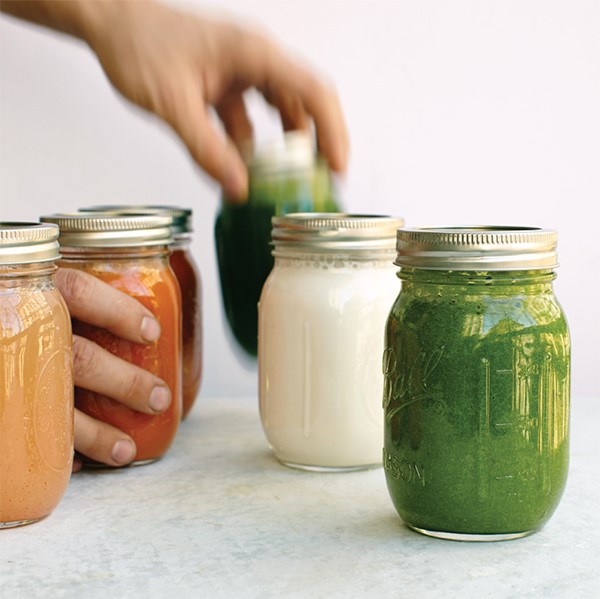
Caring for Your Fruits and Vegetables
Ripen: When it comes to avocados, tomatoes, mangoes, melons, apples, and pears, leave them on the countertop until they are ripe, and then put them in your fridge. Do not do this with citrus and berries, as they will rot. Bananas should be kept alone; they ripen quickly and can affect the fruits and vegetables around them.
Prewash: As you prepare for juicing, it’s important not to prewash your vegetables. Wait until right before you’re about to use them, because if you wash them too early, it cuts their shelf time in half. Also, do not precut them—the fruits and vegetables will start to oxidize and lose their nutritional value.
Storage: If they are tied together, remove the ties and if you see any decaying parts, remove those from the vegetable. Do not cram your vegetables together, as they will go bad quicker. Give them space to breathe. If you are keeping them in a bag, make sure there are small holes so they can get air. A good rule of thumb is not to keep fruits and vegetables together.
Freeze: For smoothies, another easy prep trick you can do beforehand is freezing your nut milk in ice cube trays. I also like for the fruit to be frozen because it gives a nice texture to the smoothie and helps prevent waste. But greens, herbs, and softer fruits, like berries and cherries, should be purchased more regularly at the local farmers’ market or health-food store. Larger grocery stores are also starting to carry more organic produce so there are more and more options available.
If you are going to choose juice that’s already made, I recommend staying away from pasteurized juices and HPP processed juices. The best option is a cold-pressed juice that hasn’t gone through HPP. HPP stands for high-pressured processing. What that means is that the juice has gone through a pasteurization process that extends its shelf life for up to a month. HPP is not technically fresh when it has a shelf life of a month. The process also sterilizes. It’s technically processing the juice, making it no longer fresh.
Storing Juices & Smoothies
When it comes to storing juices, some storage is going to depend on the juicer you’re using.
If you’re going to save the leftover juice, use a darker glass color for storage and then put it in an airtight container and place it in the back of the refrigerator. You can also get creative and freeze the juice in ice cube trays. Then, when you are making smoothies, you can add a little extra nutrition by throwing in one or two! With smoothies, the same process applies, but your smoothie may settle and change consistency when you store it in the refrigerator.
